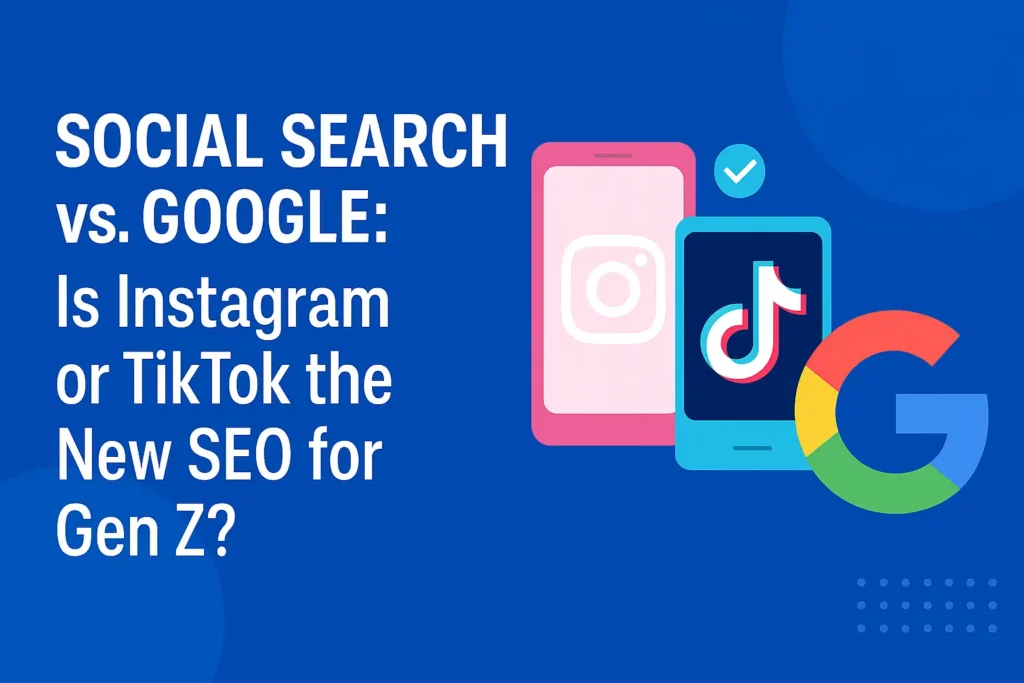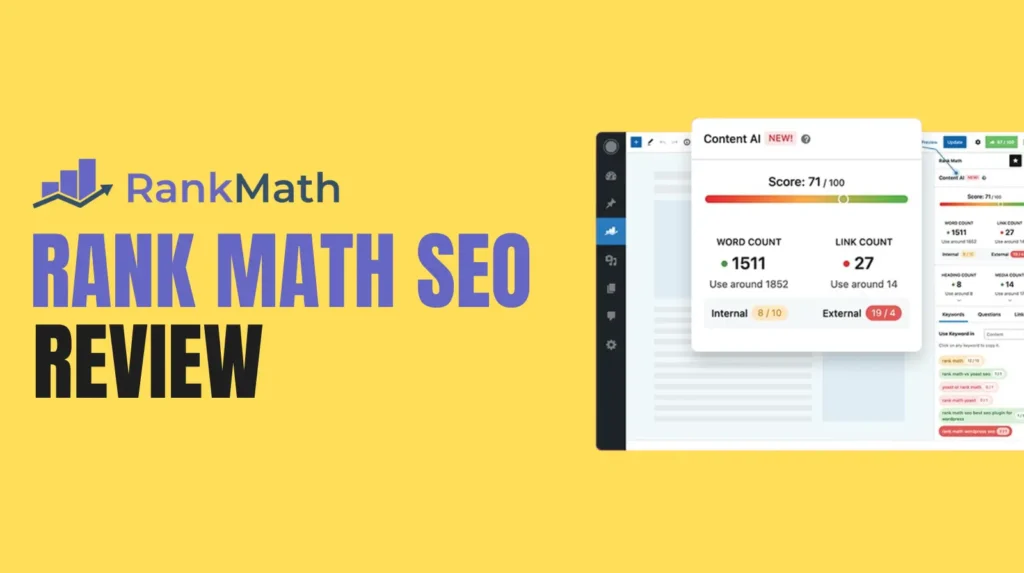For two decades, “search” meant one thing: Google. You had a question, you typed it into a white box, and you scrolled through a list of blue links. But that behaviour is fundamentally changing.
The catalyst? Gen Z.
According to Google’s own internal research, nearly 40% of young people, when looking for a place for lunch, don’t go to Google Maps or Search. They go to TikTok or Instagram. This isn’t a minor trend; it’s a seismic shift in how a new generation discovers information.
This leaves businesses asking a critical question: Is social search replacing traditional SEO?
The answer is complex. While SEO isn’t dead, businesses that rely solely on ranking on Google are becoming invisible to a growing, influential audience. To survive, you must be discoverable where your customers are searching and increasingly, that’s on social feeds.
This article explores why this shift is happening, how social search works, and the hybrid strategy your business needs to adopt to win in 2025.
Why Gen Z Prefers TikTok & Instagram for Discovery
Gen Z grew up in a world of short-form video, instant answers, and visually-driven content. To them, traditional search engines can feel slow, text-heavy, and cluttered with ads.
Their preference for social search is driven by four key factors:
- Visual, Human-Centered Answers: They would rather watch a 30-second video of a real person showing them “the best coffee in Mumbai” than read a 2,000-word blog post about it. It’s faster, more engaging, and feels more authentic.
- Community-Driven Trust: A recommendation from a creator or a video with thousands of positive comments feels more trustworthy than an anonymous blog post optimized for keywords. It’s peer-reviewed in real-time.
- Speed and Efficiency: A quick video tutorial or a “get ready with me” product review delivers information in a more digestible format than long-form text.
- Discovery of Trends: Gen Z doesn’t just search for answers; they search for what’s current and relevant now. Social platforms are built to surface trends, while Google is built to surface evergreen information.
How Social Search Works: The New Ranking Factors
Traditional SEO is a science of keywords, backlinks, site authority, and technical optimization. Social search operates on a completely different set of signals.
On platforms like TikTok and Instagram, the algorithm prioritizes content based on:
- Engagement: Likes, comments, shares, and especially saves. A “save” is a powerful signal that the content is valuable and useful.
- Relevance & Keywords: Keywords still matter, but they are used in captions, on-screen text, spoken words (which are transcribed by the AI), and hashtags. This is often called “Social SEO.”
- User Behavior: The algorithm tracks what you watch, who you follow, and how long you linger on a video to personalize your search results.
- Creator Credibility: The algorithm learns which creators are trusted within a specific niche (e.g., skincare, finance) and boosts their content in relevant searches.
It’s less about technical wizardry and more about creating genuinely helpful, engaging content that people want to interact with.
E-E-A-T: The Universal Language of Trust on Google and Social
Here’s where the old and new worlds collide. Google uses a framework called E-E-A-T to evaluate content quality. A previous version of this draft incorrectly stated this didn’t matter, in reality, E-E-A-T is a foundational concept in Google’s Search Quality Rater Guidelines.
- Experience: First-hand, real-life experience with the topic.
- Expertise: Demonstrable skill and knowledge.
- Authoritativeness: Being a recognized, trusted source.
- Trustworthiness: Accuracy, honesty, and credibility.
While Google looks for these signals in long-form content, social media has its own, parallel version of E-E-A-T:
- A travel vlogger showing their actual trip is Experience.
- A certified dermatologist explaining skincare ingredients is Expertise.
- A verified profile with a large, engaged following is Authoritativeness.
- Consistent, authentic product reviews and transparent sponsored posts build Trustworthiness.
The takeaway is simple: whether on Google or TikTok, users crave credible content from sources they can trust. The principles remain the same, even if the format changes.
The Hybrid Strategy: How Businesses Must Adapt in 2025
Ignoring social search is no longer an option. A Google Business Profile for your marketing agency in Nagpur is essential, but if you’re not discoverable in a Instagram search for best digital marketing services in Nagpur, you’re invisible to a growing audience.
Here’s how to build a hybrid discovery strategy:
- Create Searchable Video Content: Don’t just post trends. Create short-form videos that answer common questions, like tutorials, product demos, “how-to” guides, and location-based recommendations.
- Optimize for Social SEO: Treat your social content like you treat your blog. Include relevant keywords naturally in your captions, hashtags, on-screen text, and even your spoken script.
- Embrace User-Generated Content (UGC): Encourage and reshare content from your customers. A positive video review from a real person is more powerful than any ad you can create.
- Collaborate with Creators: Partner with influencers and creators who have already built E-E-A-T within your niche. Their credibility becomes your credibility.
- Repurpose, Don’t Recreate: Turn your long-form blog posts into bite-sized TikToks or Instagram Reels. A “Top 5 Tips” article can easily become a 30-second video.
SEO Isn’t Dead, It’s Evolving
Let’s be clear: social search will not replace Google entirely. For in-depth research, complex B2B solutions, or high-consideration purchases, Google remains the undisputed king. You don’t search TikTok for “enterprise CRM software reviews.”
The future isn’t about choosing one over the other; it’s about understanding their distinct roles:
- Google SEO: Best for high-intent, research-driven queries and building long-term, evergreen authority.
- Social Search: Best for discovery, visual topics (food, travel, fashion), local recommendations, and building community trust.
A smart business integrates both into a holistic “omnichannel discovery” strategy.
Final Verdict: Embrace the “And,” Not the “Or”
The rise of social search is not a fad; it’s a fundamental rewiring of discovery habits, led by Gen Z and increasingly adopted by millennials. They trust real people over faceless brands and prefer quick, visual answers over dense pages of text.
While Google Search will continue to be a dominant force for informational queries, its monopoly on discovery is over. For businesses in consumer-facing sectors like retail, hospitality, travel, and beauty, being visible on TikTok and Instagram is now just as important as being on the first page of Google.
The winners in this new era won’t be the ones who abandon SEO for social, or vice versa. They will be the ones who master both games creating valuable, in-depth content for Google while also producing authentic, engaging, and searchable content for social platforms. The question is no longer “SEO or social?” but “How can my SEO and social strategies work together?”








